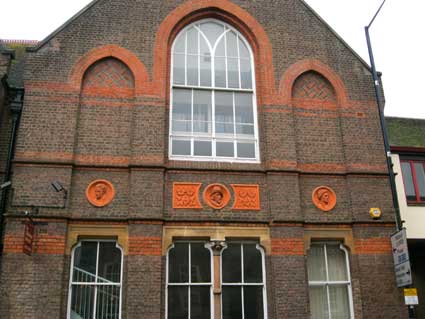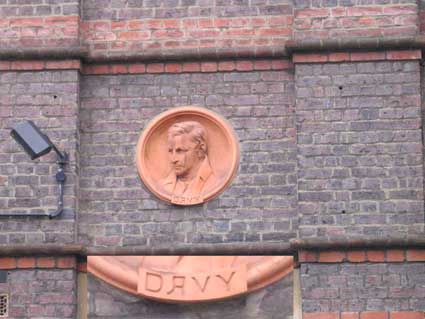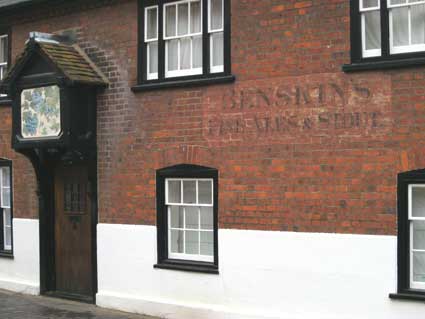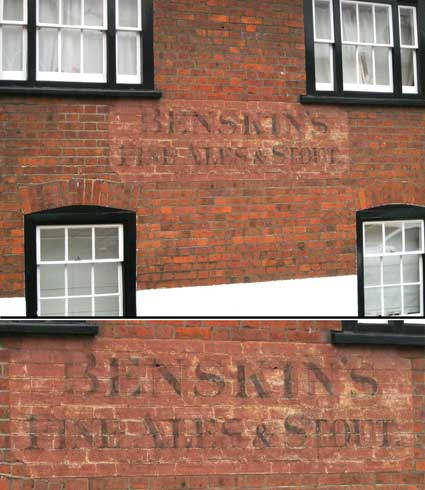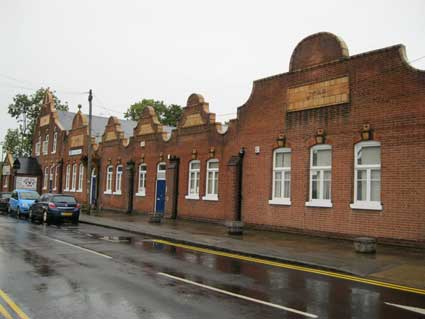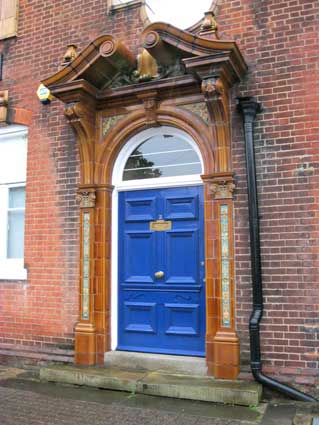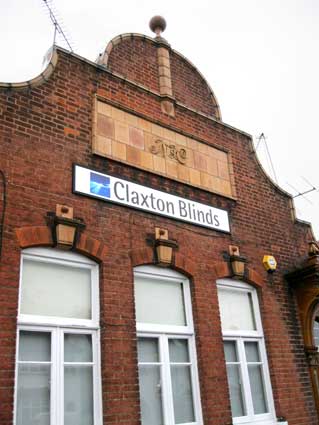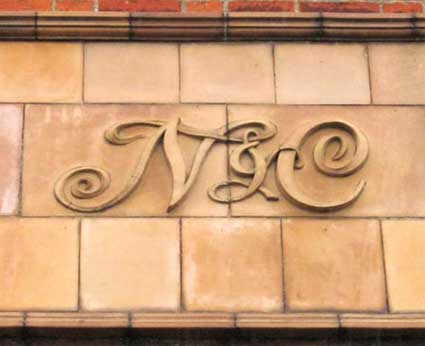St Albans
French Row: The Clock Tower
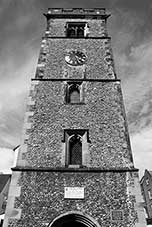
St Albans' Clock Tower is the only surviving medieval town belfry in England and is designated as a Scheduled Ancient Monument. The people of St Albans built the tower, which was completed by 1405 as a symbol of their resistance against the power of the abbot of St Albans. The Tower allowed the town to sound its own hours and, until 1863, the curfew. The Clock Tower's bell rang out for the first Battle of St Albans during the Wars of the Roses in 1455. Today, the tower – and its 600 year old bell – still stands face to face with the abbey's tower. It is open to the public to climb to the top at certain times.
The side door, hemmed around with modern paviors and street furniture, bears a hand-painted sign:
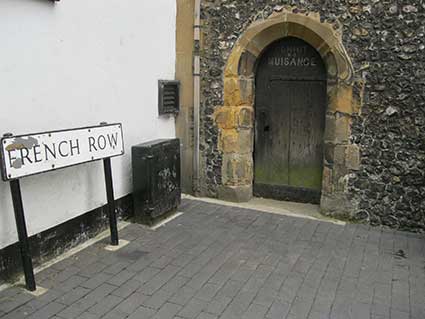
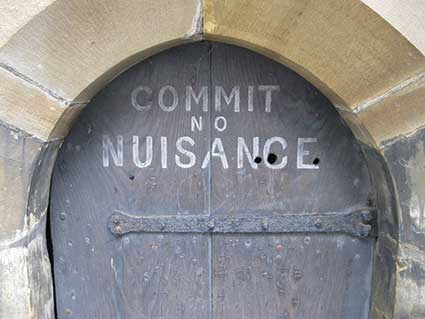
There is a 'Commit no nuisance' sign of some age in Tewkesbury. And, although not illustrated on this site yet, we learn of another on the wall of Christ Church Spitalfields in east London – there is more information on that page.


14 Market Place: The Corn Exchange

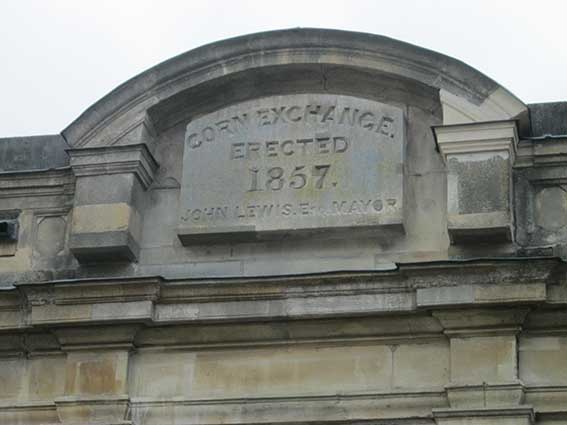
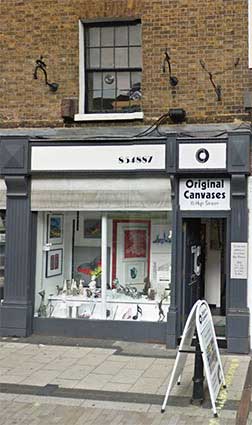
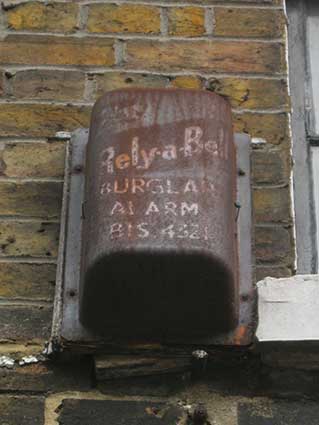
Just to the left of the 1st storey window sill is an old burglar alarm box. The amount of metal brackets and cabling at this level tells some of the story of this building.
Former School of Art/Library
St Albans on the River Ver in Hertfordshire has two official names for its inhabitants: Verulamian and Old Albanian. St Albans was a settlement of pre-Roman origin named Verlamion (or Verulam) by the Ancient British Catuvellauni tribe. It became the first major town on the old Roman road of Watling Street for travellers heading north and became the Roman city of Verulamium. After the Roman withdrawal, and prior to becoming known as St Albans, the town was called Verlamchester or Węclingacaester by the Mercian Angles. The mediaeval town grew up on the hill to the east of this around the Benedictine foundation of St Albans Abbey. This is the spot where tradition has it that St Alban, the first British Christian martyr, was beheaded sometime before AD 324. The city is therefore steeped in history.
The lettering examples here are to be found in the Romeland / George Street area, just north of the Cathedral & Abbey Church of St Alban. The first building has an 'institute' feel about the architecture and will be familar to those who regularly wait at the bus stop on the opposite side of the road. They may not have noticed the lettering on the lower part of the terra cotta roundels beneath each relief portrait:

St Albans' Clock Tower is the only surviving medieval town belfry in England and is designated as a Scheduled Ancient Monument. The people of St Albans built the tower, which was completed by 1405 as a symbol of their resistance against the power of the abbot of St Albans. The Tower allowed the town to sound its own hours and, until 1863, the curfew. The Clock Tower's bell rang out for the first Battle of St Albans during the Wars of the Roses in 1455. Today, the tower – and its 600 year old bell – still stands face to face with the abbey's tower. It is open to the public to climb to the top at certain times.
The side door, hemmed around with modern paviors and street furniture, bears a hand-painted sign:
'COMMIT
NO
NUISANCE'
NO
NUISANCE'
Perhaps there was a tendency for
male patrons of the nearby Fleur de Lys or The Boot public houses to
relieve themselves in this corner.


There is a 'Commit no nuisance' sign of some age in Tewkesbury. And, although not illustrated on this site yet, we learn of another on the wall of Christ Church Spitalfields in east London – there is more information on that page.


14 Market Place: The Corn Exchange


'CORN
EXCHANGE.
ERECTED
1857.
JOHN LEWIS ESQ. MAYOR'
ERECTED
1857.
JOHN LEWIS ESQ. MAYOR'
The St
Albans History website has more on the design of the St Albans Corn
Exchange (now, inevitably, used for retail) and materials used.
28 Market Place
Gable end in brick and stucco with lettering in terra cotta; Pike & Sons were butchers, grocers and provision merchants.
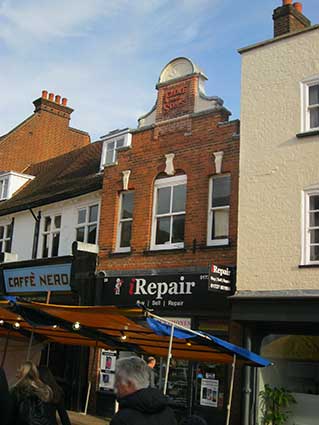
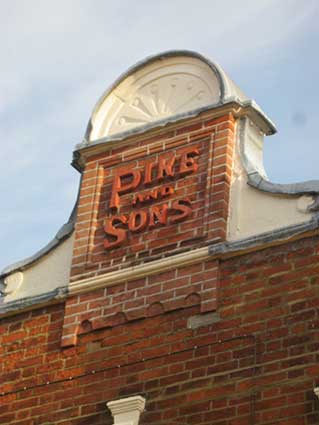
28 Market Place
'PIKE
AND
SONS'
The projecting characters have a stylish design with the
enalrged 'P' and 'S' obeying the x-height of the smaller caps. The drop
of the 'P' creates a comfortable space for the smaller 'AND'.AND
SONS'
Gable end in brick and stucco with lettering in terra cotta; Pike & Sons were butchers, grocers and provision merchants.


16 High
Street: shop front


Just to the left of the 1st storey window sill is an old burglar alarm box. The amount of metal brackets and cabling at this level tells some of the story of this building.
'Rely-a-Bell
BURGLAR ALARM
BIS. 4321'
BURGLAR ALARM
BIS. 4321'
The word 'THE' is unreadable in
the top left corner. But the brand name is a delight and deserves to be
marketed again. The Rely-a-Bell Burglar & Fire Alarm Co. Ltd. was
based at 54 Wilson Street, Lodon E.C.2 from 1935. The company dates
back to 1904 as part of the ironmongery business of Thomas Gunn,
which developed into an electrical firm.
'BIS.' is one of the old London exchange prefixes for telephone numbers, standing for Bishopsgate, which is on the north-east of the City of London. The Post Office trunk telephone system was opened to the public on 16 July, 1895. The first Post Office exchange in London was opened on 1 March, 1902: 'Central Exchange' with a capacity for 14,000 subscribers. 'City' Exchange was the second (capacity 18,000) followed by 'Mayfair' to serve the West End, 'Western' for Kensington and 'Victoria' for Westminster in the same year. Several other Post Office exchanges were also opened in the London suburbs. New dialling codes, preliminary to the start of subscriber trunk dialling in London, were introduced in the London Directory Area on 6 April, 1959. The three-letter exchange prefixes were phased out from 1966 and replaced with all-digit phone numbers.
'BIS.' is one of the old London exchange prefixes for telephone numbers, standing for Bishopsgate, which is on the north-east of the City of London. The Post Office trunk telephone system was opened to the public on 16 July, 1895. The first Post Office exchange in London was opened on 1 March, 1902: 'Central Exchange' with a capacity for 14,000 subscribers. 'City' Exchange was the second (capacity 18,000) followed by 'Mayfair' to serve the West End, 'Western' for Kensington and 'Victoria' for Westminster in the same year. Several other Post Office exchanges were also opened in the London suburbs. New dialling codes, preliminary to the start of subscriber trunk dialling in London, were introduced in the London Directory Area on 6 April, 1959. The three-letter exchange prefixes were phased out from 1966 and replaced with all-digit phone numbers.
Former School of Art/Library
St Albans on the River Ver in Hertfordshire has two official names for its inhabitants: Verulamian and Old Albanian. St Albans was a settlement of pre-Roman origin named Verlamion (or Verulam) by the Ancient British Catuvellauni tribe. It became the first major town on the old Roman road of Watling Street for travellers heading north and became the Roman city of Verulamium. After the Roman withdrawal, and prior to becoming known as St Albans, the town was called Verlamchester or Węclingacaester by the Mercian Angles. The mediaeval town grew up on the hill to the east of this around the Benedictine foundation of St Albans Abbey. This is the spot where tradition has it that St Alban, the first British Christian martyr, was beheaded sometime before AD 324. The city is therefore steeped in history.
The lettering examples here are to be found in the Romeland / George Street area, just north of the Cathedral & Abbey Church of St Alban. The first building has an 'institute' feel about the architecture and will be familar to those who regularly wait at the bus stop on the opposite side of the road. They may not have noticed the lettering on the lower part of the terra cotta roundels beneath each relief portrait:
'DAVY
BACON
HOGARTH'.
BACON
HOGARTH'.
